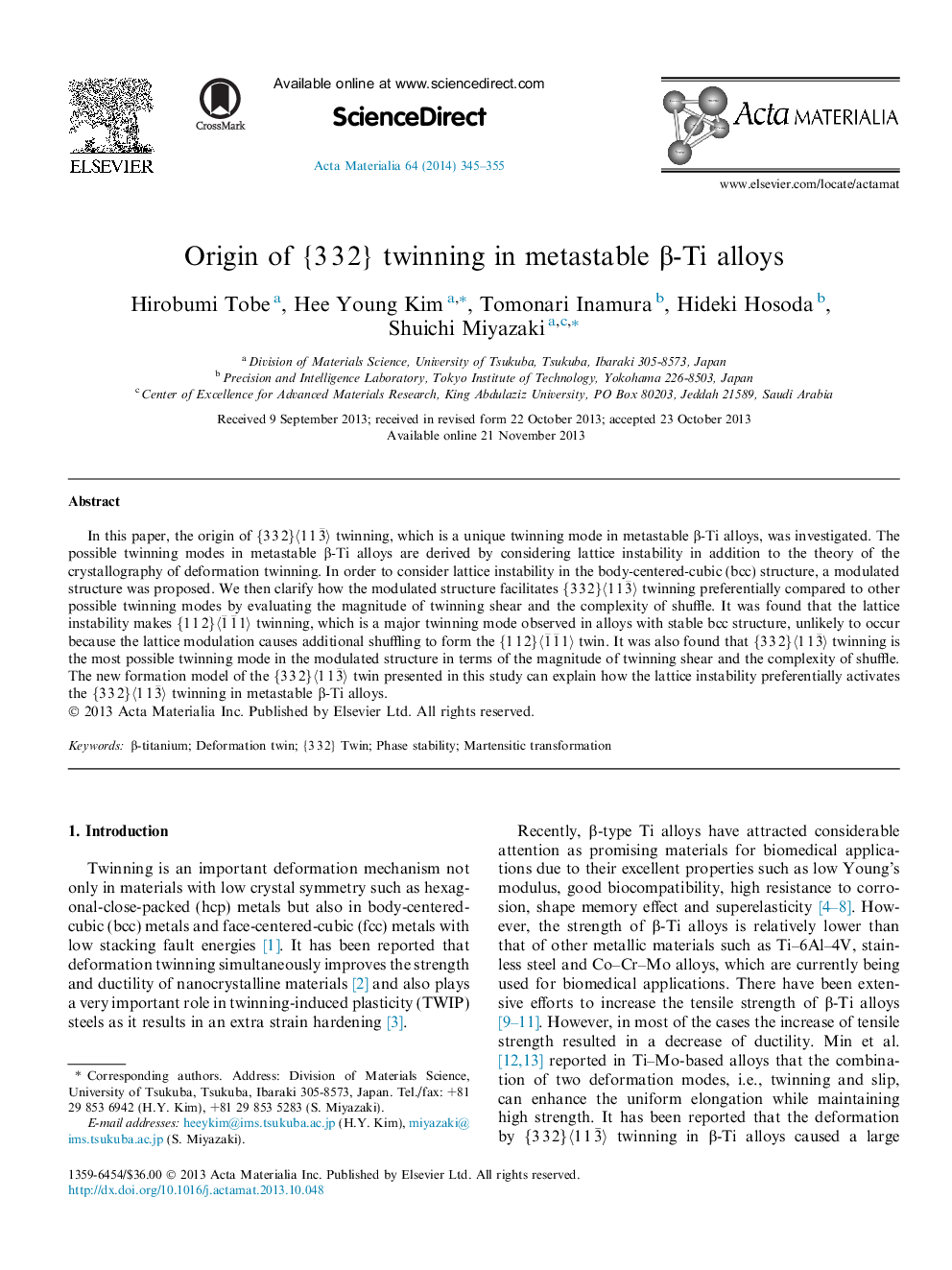| Article ID | Journal | Published Year | Pages | File Type |
|---|---|---|---|---|
| 7882692 | Acta Materialia | 2014 | 11 Pages |
Abstract
In this paper, the origin of {332}ã113¯ã twinning, which is a unique twinning mode in metastable β-Ti alloys, was investigated. The possible twinning modes in metastable β-Ti alloys are derived by considering lattice instability in addition to the theory of the crystallography of deformation twinning. In order to consider lattice instability in the body-centered-cubic (bcc) structure, a modulated structure was proposed. We then clarify how the modulated structure facilitates {332}ã113¯ã twinning preferentially compared to other possible twinning modes by evaluating the magnitude of twinning shear and the complexity of shuffle. It was found that the lattice instability makes {112}ã1¯1¯1ã twinning, which is a major twinning mode observed in alloys with stable bcc structure, unlikely to occur because the lattice modulation causes additional shuffling to form the {112}ã1¯1¯1ã twin. It was also found that {332}ã113¯ã twinning is the most possible twinning mode in the modulated structure in terms of the magnitude of twinning shear and the complexity of shuffle. The new formation model of the {332}ã113¯ã twin presented in this study can explain how the lattice instability preferentially activates the {332}ã113¯ã twinning in metastable β-Ti alloys.
Related Topics
Physical Sciences and Engineering
Materials Science
Ceramics and Composites
Authors
Hirobumi Tobe, Hee Young Kim, Tomonari Inamura, Hideki Hosoda, Shuichi Miyazaki,
